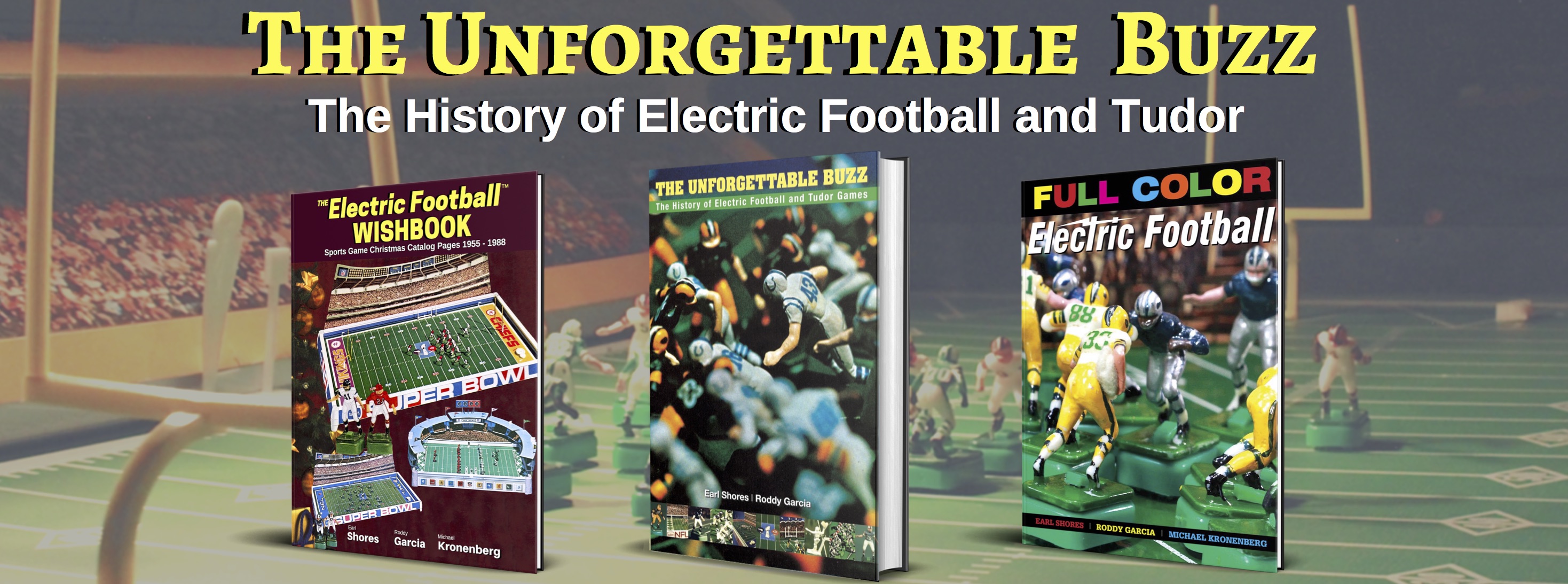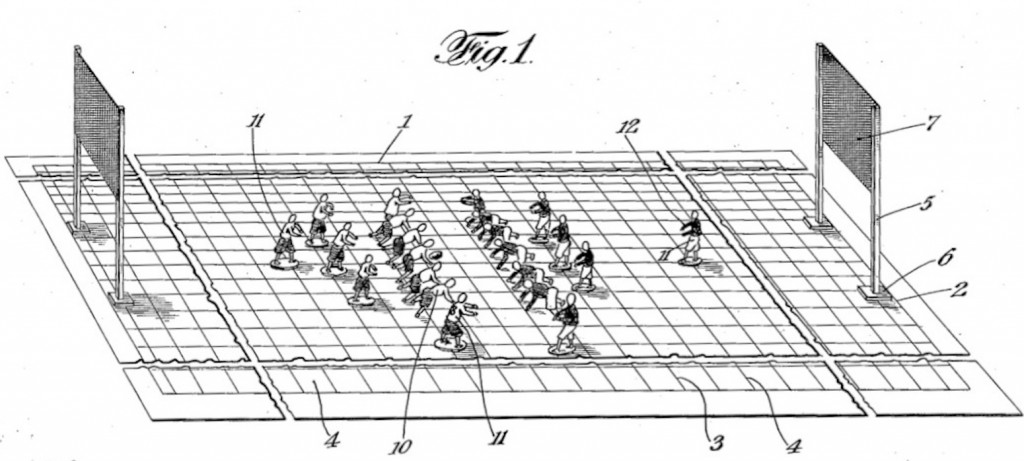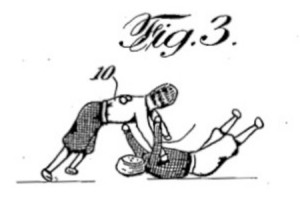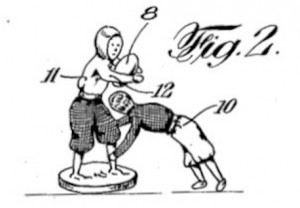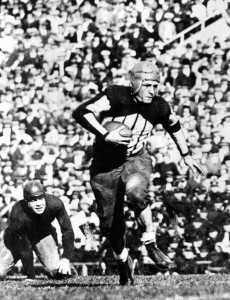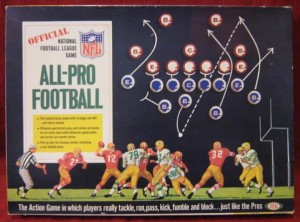As we mentioned in our previous installment of “Before Electric Football,” having football players “run” on a game board was something toy makers and inventors had dreamed about long before Norman Sas came to Tudor. During our research for The Unforgettable Buzz we had the opportunity to get a close look at football games from the past.
In 1926, before Tudor even existed, Robert Rubino and Wallace Witcombe obtained a patent for their “Football Game.” The game’s patent number was 1,603,717, and it’s clear that Mr. Rubino and Mr. Witcombe had a very thoughtful and forward-looking approach to recreating football in miniature.
In their description to the Patent Office Rubino and Witcombe declared: “A very important feature of this invention resides in the game pieces or men or players who are used for the purpose of playing the game.” The feature they were referring to was having players in two different poses, down lineman (“kneeling charging position”), and upright backs and ends in a “standing running position, as well as a ball receiving and carrying position.” It was imperative to Rubino and Witcombe that the backs and ends have their arms positioned in such a way “as to catch and receive and hold the ball.”
On page two of the patent they completed their vision of miniature football players: “All of the game pieces or men (Figures 10 and 11) are or may be decorated to imitate uniforms or colors of schools, colleges, or clubs and carry numbers on their backs and have head guards or other playing paraphernalia, and in fact duplicate to a marked degree the appearance of the players on the field of the outdoor game of football.”
It all sounds pretty familiar, doesn’t it? Down lineman as well as backs and ends that can actually carry the football? Players “decorated” with uniforms, numbers, headgear, and other playing paraphernalia? It sounds a lot like…electric football!
This is not to suggest that Norman Sas or Lee Payne “borrowed” Tudor’s realism from Rubino and Witcombe. Norman and Lee likely knew nothing of this patent. But what it does suggest is that the desire to create a highly detailed miniature football platform was a long-held one.
Rubino and Witcombe wanted to have a miniature Red Grange, just as Lee Payne conceived a miniature Bart Starr and Gale Sayers, and just as today’s coaches might want a miniature Drew Brees or LeSean McCoy (gratuitous Eagles’ reference).
The weak spot of Rubino and Witcombe’s patent was the player’s method of locomotion – alternate moves like a chess game (see the squares on the field). Those of us who tried and failed to enjoy playing Ideal’s 1967 NFL All-Pro Football game can verify that the alternate-movement technique makes for a very tedious game-playing experience. Unless you’re playing chess or checkers.
More to come in The Unforgettable Buzz. We promise not to be tedious.
Earl & Roddy
